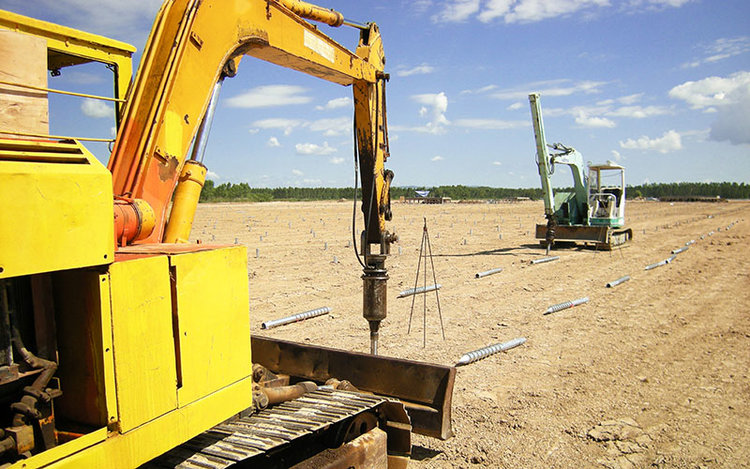Tightening enforcement action is catching out solar contractors. An instructive example from Queensland.
The recent solar farm construction boom has seen both interstate and international contractors enter the Queensland market, as well as other state-based solar markets. With projects on rushed timelines and limited awareness for compliance, some contractors have recently been caught out. One such matter, St Hilliers Property Pty Ltd v Pronto Solar Innovations Pty Ltd [2018] QSC 164, has now been taken to court.
Licensing for solar farm construction
Any contractor involved in the construction of a solar farm should consider whether it holds adequate licences for the activities for which it is engaged. The construction of a solar farm will invariably include some activities that require a contractor’s licence for building work and some that require an electrical work licence for electrical work. The terminology varies across states and territories, but the line of enquiry should always be the same.
If the contractor also undertakes design and engineering with a connection to Queensland, it is likely that the engineering work needs to be supervised by an RPEQ-registered engineer. At present, only Queensland has a registration regime for engineers, but Victoria is looking to introduce a similar regime.
In our recent work we have seen a strengthening of enforcement action from the QBCC and the Queensland Electrical Safety Office, often instigated by aggressive trade union activity and the politicisation of solar project construction. It also appears that there might have been a tightening in internal positions as to the interpretation of licensing requirements.
QBCC licensing requirements
Under section 42(1) of the Queensland Building and Construction Commission Act 1991 (the “QBCC Act”), “[u]nless exempt under schedule 1A, a person must not carry out, or undertake to carry out, building work unless the person holds a contractor’s licence of the appropriate class under this Act”.
The term “building work” includes the “(a) erection or construction of a building” and “(e) site work (including the construction of retaining structures) related to work of a kind referred to above”. What surprises many is the breadth of the term “building”, of which schedule 2 of the QBCC Act states that it “generally, includes any fixed structure”. A legislative example includes a “fence other than a temporary fence”.
Is piling work “building work”?
In St Hilliers Property Pty Ltd v Pronto Solar Innovations Pty Ltd, Pronto Solar Innovations and Pronto Projects were contracted to undertake pre-drilling and pile driving. The question arose whether section 42(1) of the QBCC required them to hold a contractor’s licence.

Daubney J reiterated his 2015 judgment in Ooralea Developments Pty Ltd v Civil Contractors (Australia) Pty Ltd [2015] 1 Qd R 311 in which he found that the term “building” in the Queensland Building Services Authority Act 1991 (Qld) (the predecessor legislation of the QBCC Act) clearly went beyond the ordinary meaning and was extended to any fixed structure. He observed that a “structure [did] not have to resemble in any way a building (in the traditional sense)”.
Daubney J found further reasoning in part 32 of schedule 2 of the QBCC that specifically contains a licensing class for “Foundation work (piling and anchors)” which covers “(4) install piling including driven piles, cast-in piles, groutcrete piles, compressed piles, bored cast-in place piles and screw piles”.
Considering these reasons, it was inescapable that the piling work undertaken by Pronto Solar Innovations and Pronto Projects constituted “building work”. We cannot fault Daubney J’s conclusions on this point.
Consequences
The penalties for a violation of section 42(1) of the QBCC Act are stiff:

In the present case, the fact that Pronto Solar Innovations and Pronto Projects did not hold adequate contractor’s licences also meant that they were not able to rely on the security of payment legislation under the Queensland Building and Construction Commission Act 1991 (Qld) nor on the Subcontractors’ Charges Act 1974 (Qld). Under section 42(3) of the QBCC Act, they also lost their right to the contractually agreed consideration for their work and were limited to “reasonable remuneration” under section 42(4) of the QBCC Act. “Reasonable remuneration” is more limited than the “agreed consideration”.
Exclusions and exemptions
No law is without exclusions and exemptions. A wide array of activities is specifically excluded from the ambit of “building work”. Even if an activity is “building work”, there might still be an exemption available from the requirement to hold a contractor’s licence. Both exclusions and exemptions must be assessed on a case-by-case basis.
Manage your exposure
Licensing requirements are clearly not easy to navigate, but — when properly managed — will not hinder a project from going ahead. If in doubt, it may be safer to obtain the relevant licences to avoid any distracting investigations and questions.
Given recent industry experience with a major head contractor appearing to be in questionable financial health, the importance of being adequately licenced is further underlined. Access to the Subcontractors’ Charges Act 1974 (Qld) can secure payments, but this path is precluded for those not adequately licensed.
In order to avoid the disruption caused by contractors or subcontractors not being able to perform the work for which they were contracted, principals and head-contractors will be well advised to take a keen interest in their contractors’ and their subcontractors’ licensing position and manage aspects of this contractually.

